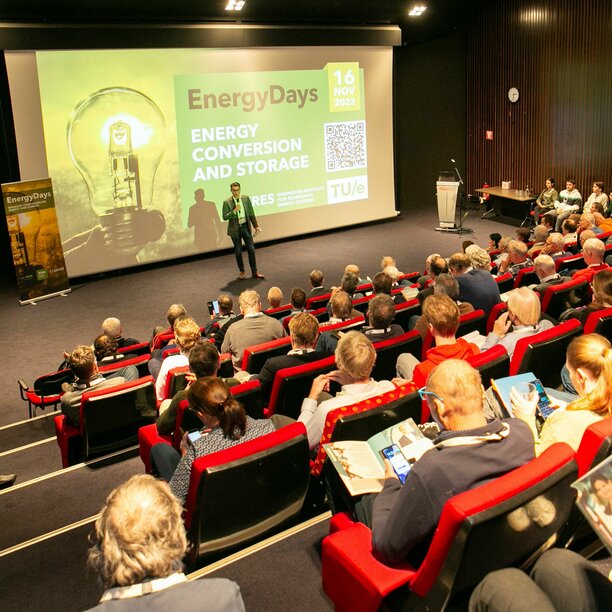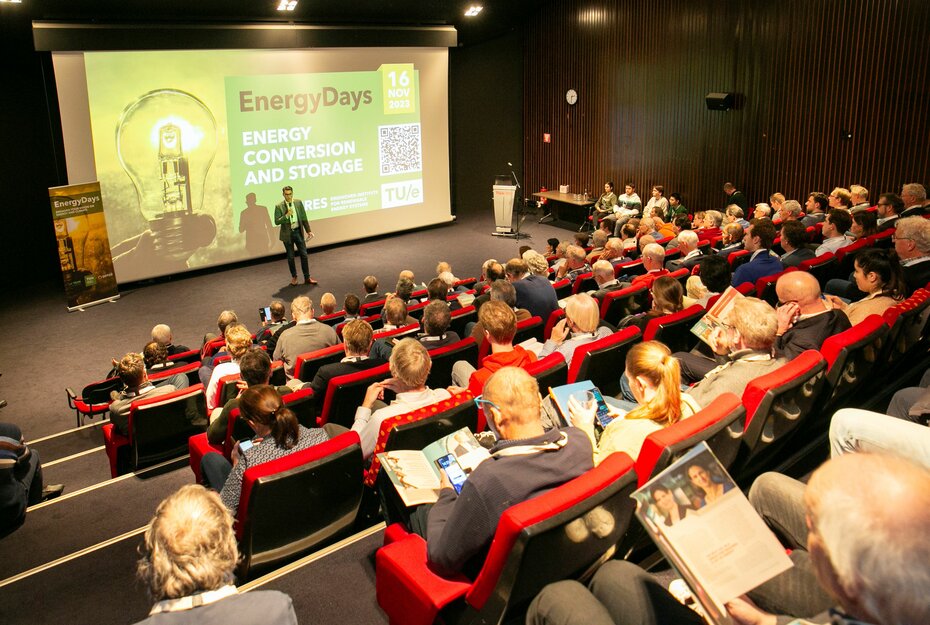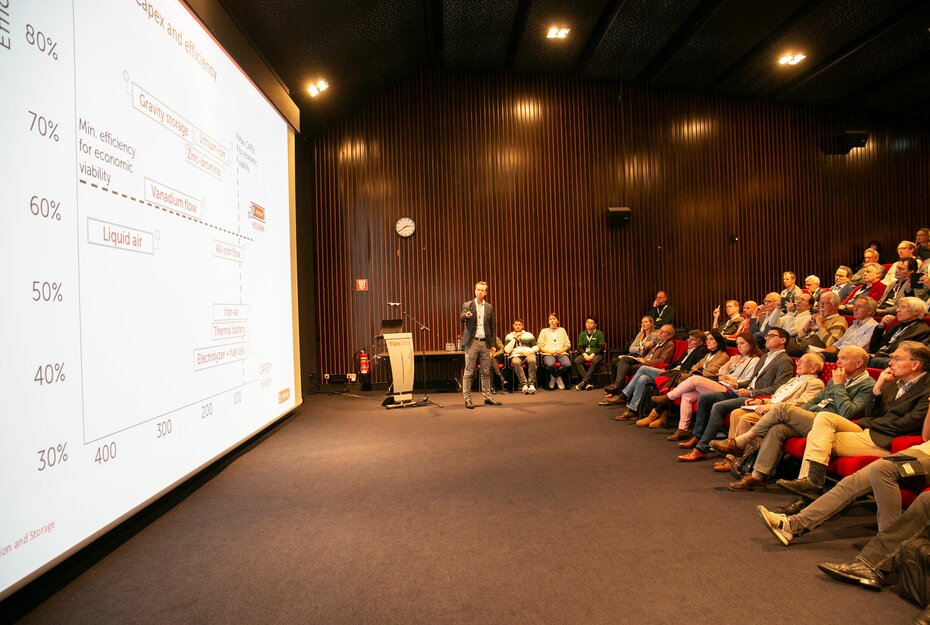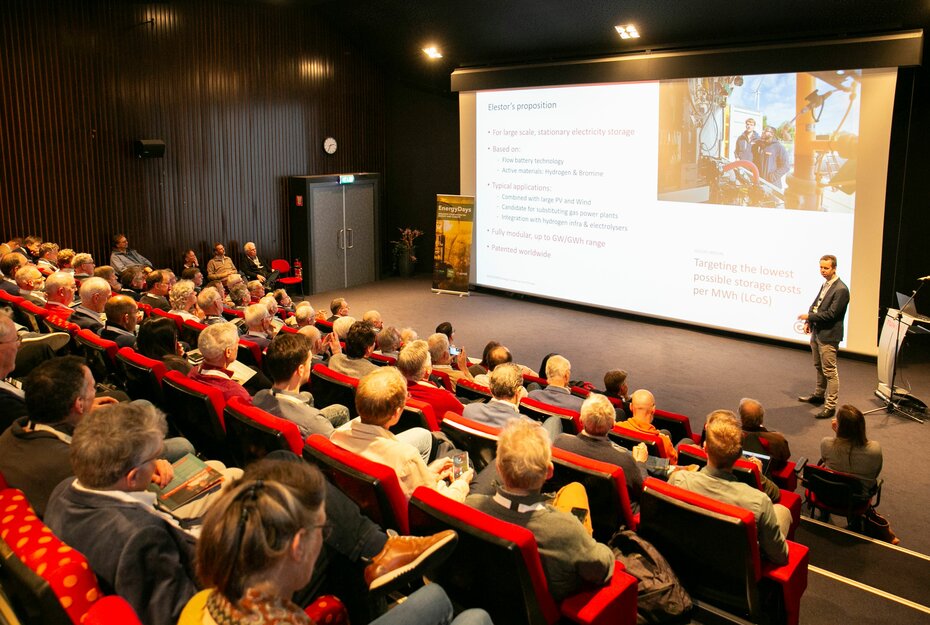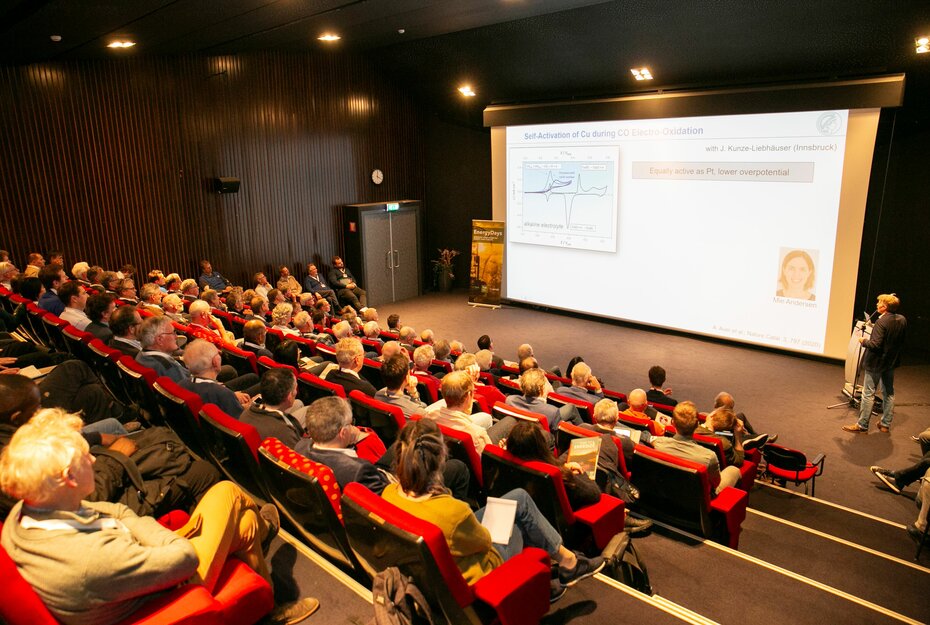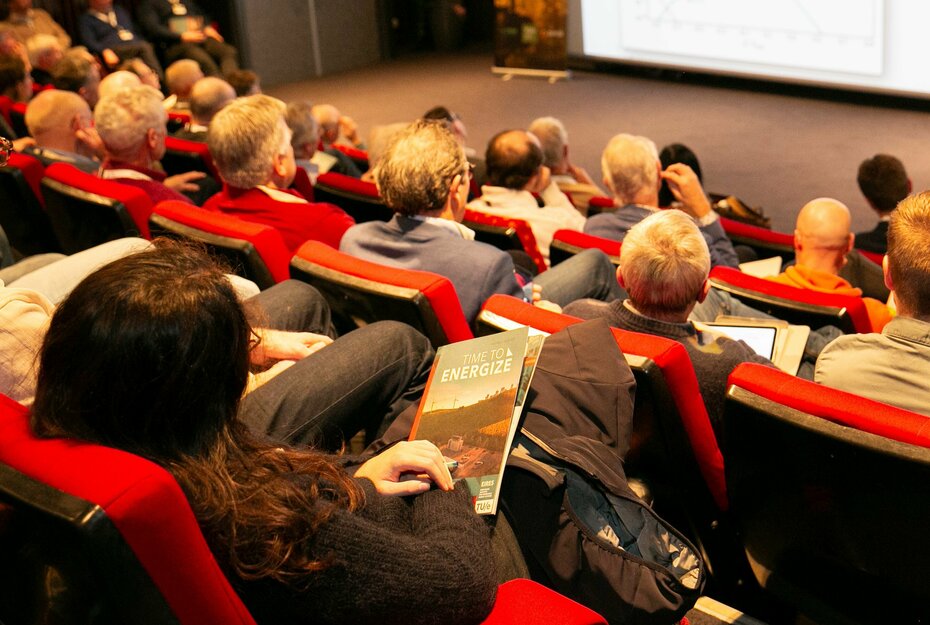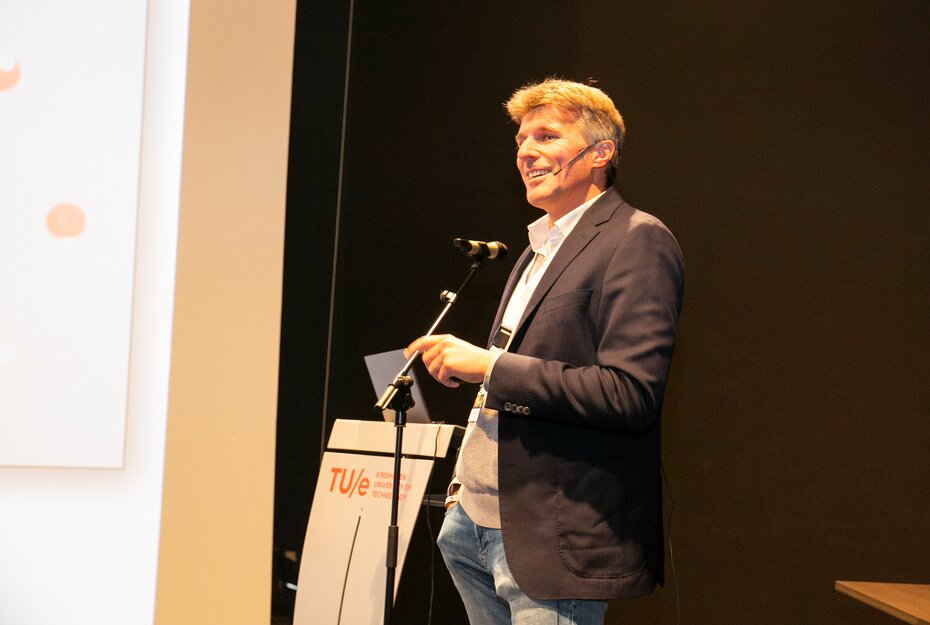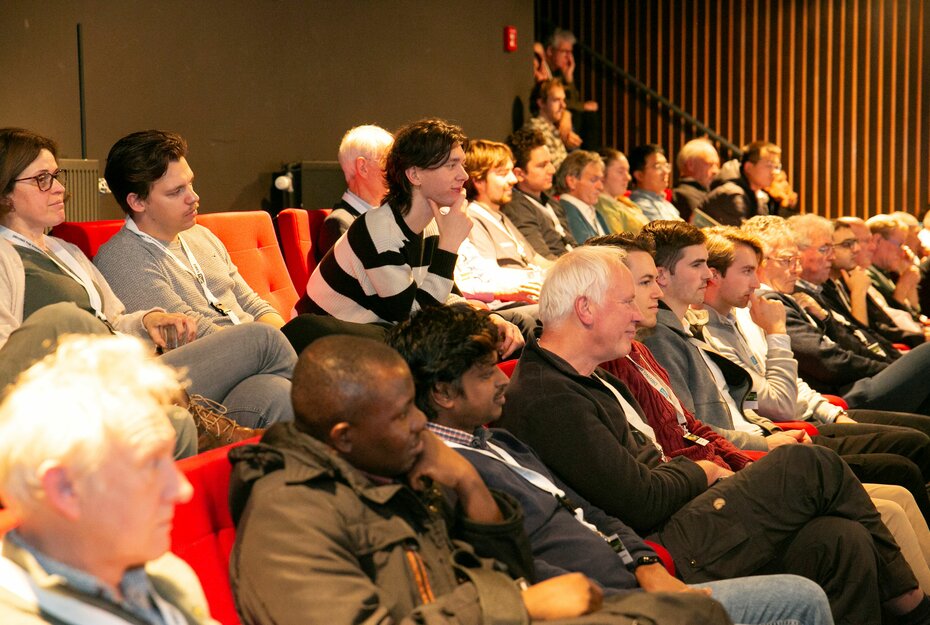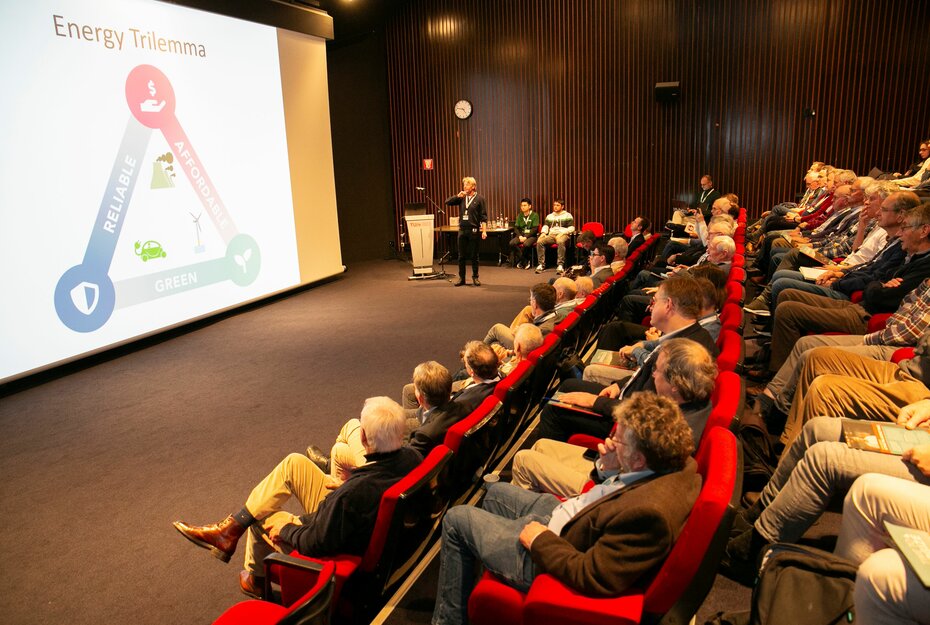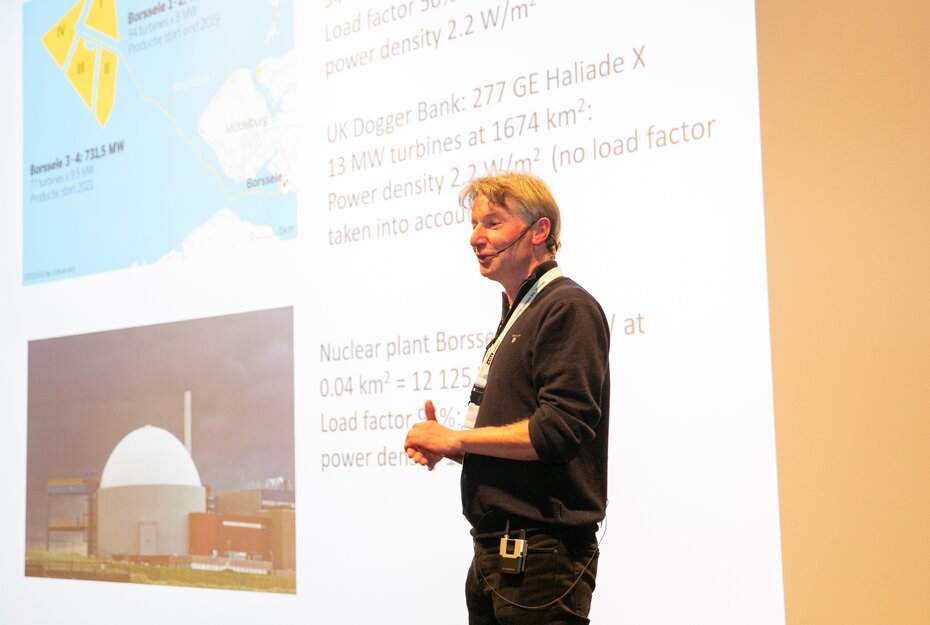‘When it comes to the energy transition, storage and conversion are the biggest scientific challenges,’ stated Mark Boneschanscher, managing director of EIRES and chair of the day, before introducing the three speakers of the afternoon.
Batteries for bi-directional power plants
Batteries for bi-directional power plants
The first to take the floor was Wiebrand Kout, founder and CTO of Elestor BV, a company that develops large-scale flow batteries for long duration storage of electricity. Kout has ample experience with hydrogen electrochemical systems, as he pioneered the PEM fuel cell at NedStack, the electrochemical hydrogen compressor at HyET and now the Elestor hydrogen bromine flow battery. ‘I’ve walked into an empty space with a funky idea three times now. Elestor is the best one,’ he commented.
Kout is a strong believer in the combination of wind, solar and storage, he stated. ‘If you install enough solar panels and wind mills in the right ratio, we will not need any seasonal storage,’ he argued, showing graphs that illustrated how the lack of sun and therefore of solar power during winter can be compensated by the excess wind that is blowing during winter. ‘What we do need then though, is long term storage to for example help us through the night on solar power.’ Eventually, Kout foresees an energy system with so-called bi-directional power plants, where large-scale battery systems can either store or provide energy at will.
With their flow batteries based on hydrogen and bromine, Elestor claims to have a suitable candidate to do the job. ‘We have demonstrated a proven lifetime of over 8,600 hours, and we have built demonstrator projects at the premises of our launching customer Vopak to show tat we can scale up to commercially interesting scales.’ The climate crisis is a crisis of imagination, stated the entrepreneur. ‘Don’t use yesterday’s technology for tomorrow’s energy system, but make a masterplan that is quantified and includes new solutions.’
Speeding up multi-scale models
Speeding up multi-scale models
The next speaker, Karsten Reuter, Director of the Fritz-Haber-Institut der Max-Planck-Gesellschaft, delved deeper into the modelling side of energy systems. ‘For the technology of the future we will have to constantly convert different forms of energy into each other. Since we need diversified solutions, we also need diversified energy research,’ he stated. Many of the limitations of current conversion technologies arise at the interfaces, he said, which is why his research is directed towards gaining a fundamental understanding of interfaces from a multiscale modelling point of view.
‘I ‘ve been working in this field for decades, trying to model what happens for example at the surface of a catalyst at the atomic level. We thought we were doing a good job, until so-called operando techniques came, where experimentalists could look into electrochemical conversion systems while they were functioning. And that is when we discovered that all that time, we had been modelling the wrong thing!’
For example, catalysts were often modelled to have static surfaces, but they turned out to not be static at all. In real life, interfaces undergo all kinds of changes in morphology, structure and composition. ‘The active sites of a catalyst in real life may differ significantly from what we model upfront.’ The problem, Reuter explained, was the large jump in scales the theorists had to make between the electronic, mesoscopic and macroscopic regime. ‘This simply costs way too much computing power.’ Fortunately, another technological breakthrough has proven to be a lifeline for the theorists. ‘You may know this development under names like data science, machine learning or artificial intelligence. We now use machine learning techniques to interpolate between data we previously obtained with our models. This simulated data set is then used to train and improve our models. We can now obtain results in several hours that would have cost a PhD student three to four years before. This is a huge leap forward, and I am sure that by using this technique wisely, we can improve our models and use them to better select promising materials for certain applications.’
Plea for out of the box thinking
Plea for out of the box thinking
The final speaker of the day was TU/e’s David Smeulders, Professor of Energy Technology at TU/e. In a tantalizing presentation, Smeulders argued that smart solutions to convert and store energy are crucial to get to an energy system that is green, reliable and affordable, all at the same time. And that we need to open our eyes for alternative solutions. ‘When it comes to the energy transition, we often tend to focus on our demand for electricity. But despite the large steps we’ve made in the generation of solar and wind power, in 2022, only 15 percent of our entire energy demand was met with renewable energy. It is still hard to make green heat or to green our transportation in an affordable way. That is where the big wins for the future are.’
Smeulders strongly advocated out of the box solutions, like the one he is currently working on together with EMMETEnergy. ‘We are developing a system to convert electricity into synthetic methane, which can be stored in and transported through the facilities we already have for natural gas. Of course, we do not propose to combust the methane when energy is needed,’ Smeulders assures the public. The idea is to use a solid oxide fuel cell to break down the gas into water and CO2 directly, which is then stored in the system for the reversed process. ‘The reversibility of this process has been shown, we are now trying to improve its efficiency.’
With a list of recommendations for the new government that will be formed after the forthcoming electrons Smeulders ended his presentation, leaving the audience with ample food for thought – and for discussion – during the drinks after.
